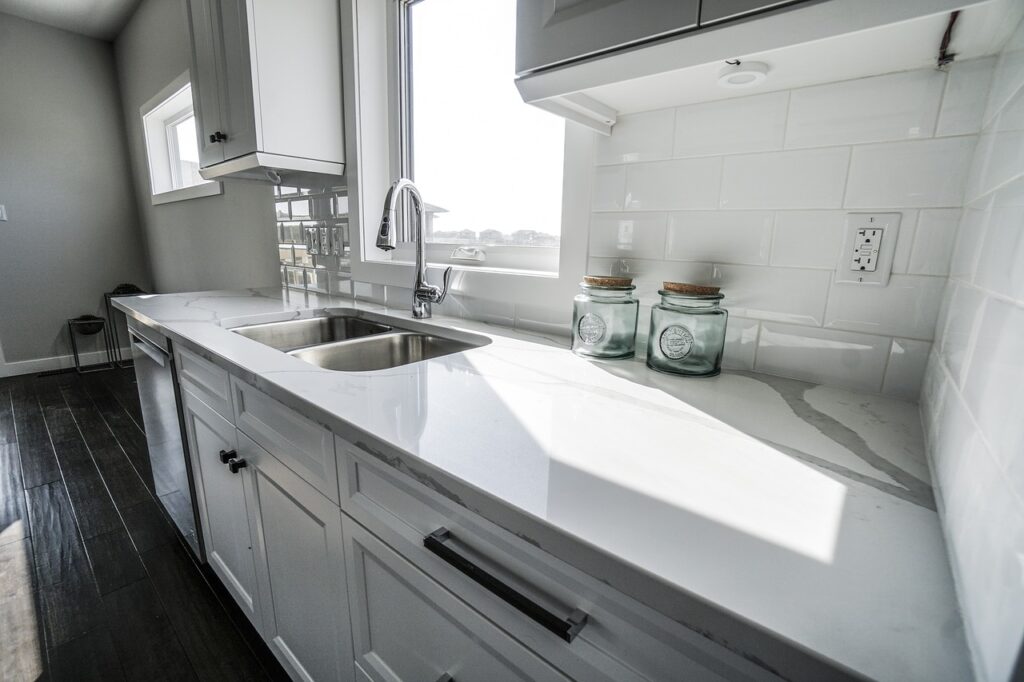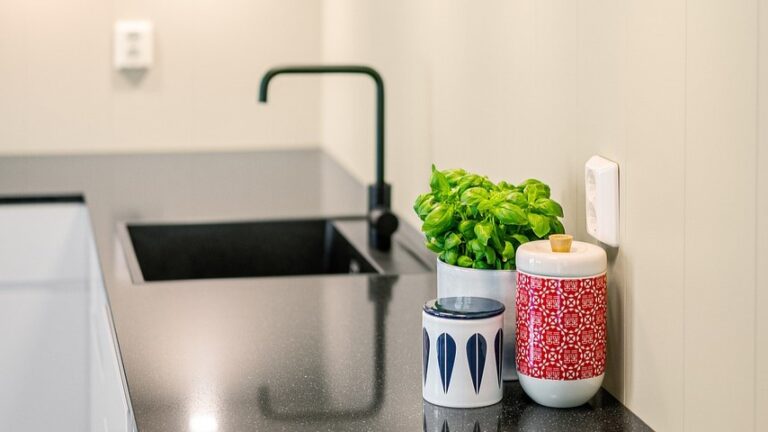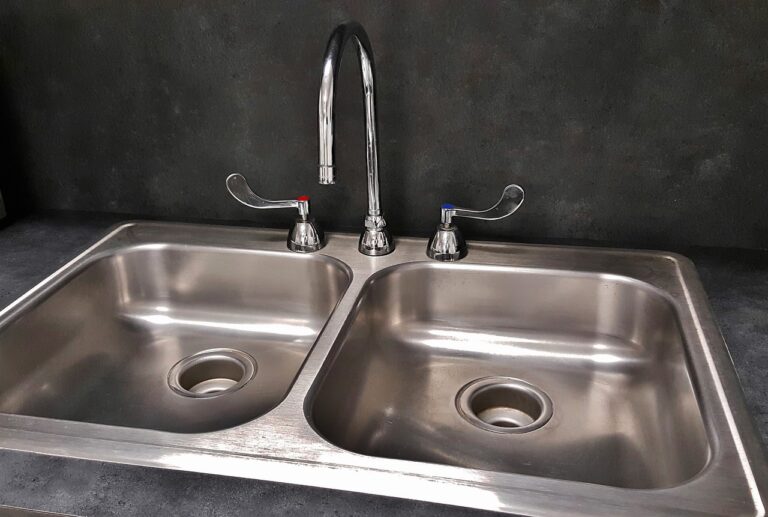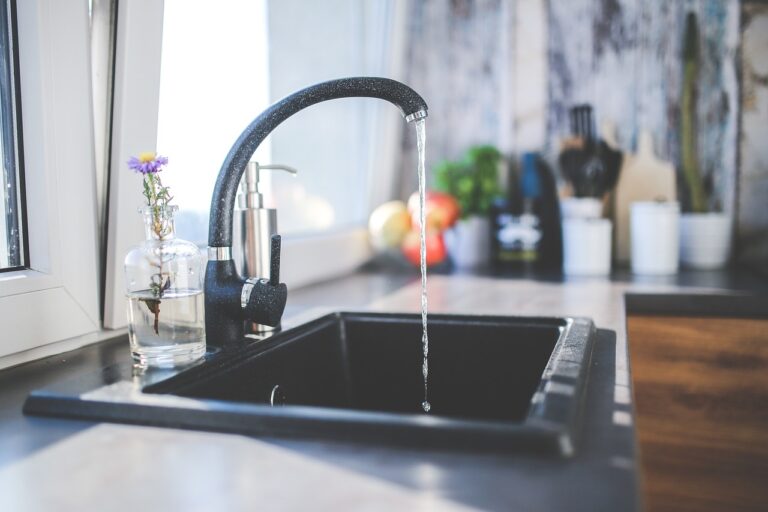White Drop in Kitchen sinks blend function and elegance. Explore their allure—materials, sizing, installation, maintenance, and design trends. Join us to uncover how these sinks redefine kitchen aesthetics.”
In kitchen design, the sink is both functional and a design centrepiece. White drop-in kitchen sinks have gained prominence for their timeless elegance and practicality
Beyond functionality, these sinks add sophistication to any kitchen setting, whether traditional or modern. This comprehensive guide uncovers the allure of white drop-in sinks—examining materials, sizing, installation, maintenance, and design trends. Join us in exploring how these sinks transcend their utilitarian role to become defining elements in kitchen aesthetics.

Understanding White Drop-In Kitchen Sinks
White drop-in kitchen sinks, known for their timeless appeal and versatile functionality, are a popular choice in modern kitchen designs. To grasp their significance, it’s essential to understand their structure, advantages, and the various materials used in their construction.
Defining Drop-In Sinks:
Drop-in sinks, also known as top-mount or self-rimming sinks, feature a visible rim that rests on the countertop surface. This installation method involves placing the sink into a pre-cut hole in the countertop, with the rim sitting on top, providing stability and support. This design offers ease of installation and replacement, making it a preferred option for many homeowners and professionals.
Advantages of White Sinks in Kitchen Spaces
The pristine white color of these sinks offers a myriad of benefits. Firstly, white hues create a sense of spaciousness, ideal for smaller kitchens, and effortlessly blend with a range of color palettes, allowing for versatile design choices. Moreover, they reflect light, brightening up the surrounding space and imparting a fresh, clean ambiance to the kitchen.
Materials for White Drop-In Sinks
Porcelain/Ceramic Sinks: Known for their classic appeal and durability, porcelain or ceramic sinks are fired at high temperatures, resulting in a glossy finish. They’re resistant to stains and scratches, making them a practical choice for busy kitchens.
Stainless Steel Sinks: Renowned for their durability and easy maintenance, stainless steel sinks are a popular choice. They offer a sleek, modern appearance and are resistant to rust and corrosion.
Composite Granite or Quartz Sinks: Combining durability with aesthetic appeal, composite sinks crafted from granite or quartz particles mixed with resin offer a range of color options, strength, and resistance to scratches and heat.
Understanding the structural components and benefits of white drop-in kitchen sinks, alongside the diverse materials available, is crucial for selecting the ideal sink that aligns with both functional needs and design preferences.
Choosing the Right Size and Style
A white drop-in kitchen sink’s functionality and visual appeal are significantly influenced by its size, depth, and style. Determining the appropriate dimensions and design is crucial for achieving a harmonious and practical kitchen space.
Selecting the Ideal Size and Depth:
ConsideringConsidering Kitchen Layout and Available Space: Assessing the kitchen layout helps in determining the suitable sink size. For smaller kitchens, a compact yet deep sink might be preferable, while larger spaces could accommodate broader or double-bowl sinks.
FamilyFamily Size and Usage Patterns: Understanding the household’s needs is essential. Families that engage in frequent cooking or use larger pots and pans might benefit from deeper or wider sinks to accommodate these tasks efficiently.
Exploring Different Styles and Designs:
Traditional vs. Modern Aesthetics: White drop-in kitchen sinks are available in various styles, catering to diverse design preferences. Traditional styles often feature rounded edges and a more classic look, while modern designs showcase sleek lines and sharper angles, complementing contemporary kitchen aesthetics.
Single Bowl vs. Double Bowl Configurations:
Choosing between a single large bowl or a double-bowl sink depends on individual preferences and usage habits. Single-bowl sinks offer ample space for larger cookware, whereas double-bowl sinks provide the flexibility to multitask by separating tasks between bowls.
Additional Features and Accessories:
Some white drop-in sinks come with integrated drainboards, cutting boards, or accessories like colanders and drying racks. Considering these add-ons can enhance functionality and streamline kitchen tasks.
Selecting the right size and style ensures the sink seamlessly integrates into the kitchen, optimizing space while meeting the household’s specific needs and design preferences.
Installation and Compatibility
The installation process of white drop-in kitchen sinks and their compatibility with various countertop materials play pivotal roles in ensuring a secure fit, functionality, and aesthetic harmony within the kitchen space.
Steps Involved in Installing a Drop-In Sink:
Preparing the Countertop: Before installation, ensuring the countertop cutout matches the sink dimensions is crucial. Sanding any rough edges and cleaning the area thoroughly prepares the surface.
Placing and Securing the Sink: Positioning the sink in the cutout and applying a bead of silicone sealant around the edge ensures a watertight seal. Securing clips or brackets underneath the sink rim firmly attaches it to the countertop.
Countertop Compatibility with White Drop-In Sinks:
Laminate Countertops: White drop-in sinks are generally compatible with laminate countertops due to their versatility and ease of installation. Proper sealing around the sink’s edge prevents moisture damage.
Granite Countertops: With proper cutting and sealing, granite countertops accommodate white drop-in sinks effectively, offering a sleek and modern appearance.
Quartz Countertops: White drop-in sinks complement quartz countertops, providing a seamless transition and a contemporary aesthetic when installed correctly.
Other Materials Compatibility: While white drop-in sinks can be compatible with various countertop materials, it’s essential to ensure proper measurements, sealing, and support during installation to prevent any potential issues.
Tools and Precautions for Installation:
Essential Tools: Common tools required for installation include a screwdriver, adjustable wrench, silicone sealant, plumber’s putty, and installation brackets or clips.
Precautions to Consider: Ensuring proper support for the sink during installation, applying sealant evenly, and checking for leaks post-installation are crucial precautions to prevent future issues.
Understanding the installation process and ensuring compatibility with different countertop materials are vital steps in successfully incorporating a white drop-in kitchen sink into the kitchen space, ensuring both functionality and aesthetic cohesion.
Design Trends and Innovation
The landscape of kitchen design is ever-evolving, and white drop-in kitchen sinks continue to adapt to the latest trends and technological advancements. Understanding current design trends and innovative features can assist homeowners in making informed choices that align with both functionality and style preferences.
Current Design Trends Involving White Drop-In Sinks:
Minimalist and Sleek Designs: Contemporary kitchens often lean towards minimalism, favouring sleek, streamlined white drop-in sinks that seamlessly integrate with clean countertop surfaces, enhancing the overall aesthetic.
Matte Finishes and Textured Surfaces: An emerging trend involves matte finishes and textured surfaces for white sinks, adding depth and visual interest while resisting fingerprints and watermarks.
Customization Options: Manufacturers are offering customization options such as different shapes, sizes, and edge designs, allowing homeowners to personalise their sinks to suit their unique kitchen vision.
Innovative Features and Advancements in Sink Technology:
Smart Sink Features: Some newer models incorporate smart technology, including touchless faucets, temperature-controlled water dispensers, and built-in water purifiers, enhancing convenience and efficiency in the kitchen.
Soundproofing and Enhanced Insulation: Advanced sink designs feature sound-absorbing materials and enhanced insulation, reducing noise from water flow and ensuring temperature retention for hot water.
Eco-Friendly Materials and Water-Saving Designs: There’s a rising demand for eco-friendly materials and water-saving designs in sinks, promoting sustainability without compromising performance or aesthetics.
Staying abreast of current design trends and embracing innovative sink features allows homeowners to infuse their kitchens with functionality, style, and cutting-edge technology, elevating the overall kitchen experience.
Conclusion:
White drop-in kitchen sinks encapsulate both elegance and functionality, transcending mere utility to become defining elements in modern kitchen spaces. Throughout this guide, we’ve explored their structure, installation, maintenance, design trends, and innovations.
These sinks, available in diverse materials and styles, cater to varied needs and design preferences. Selecting the right sink involves a blend of functionality and aesthetics. From porcelain’s classic appeal to stainless steel’s durability and composite materials’ versatility, these sinks offer options to suit different lifestyles.
In conclusion, the journey to choosing a white drop-in kitchen sink involves balancing functionality with personal style. By considering installation, maintenance, and design trends, homeowners can enhance their kitchens with a timeless centerpiece.







